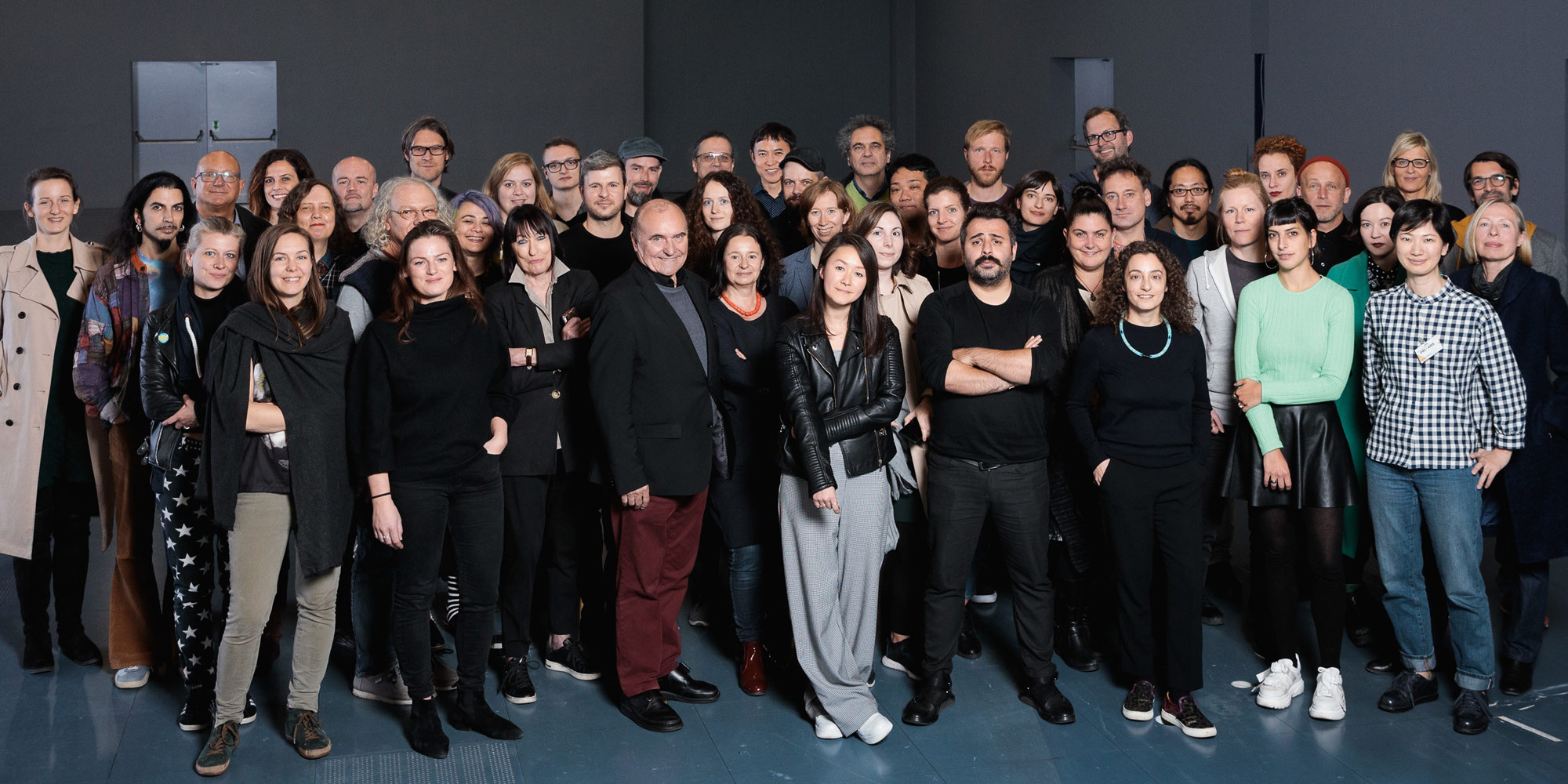2019 S+T+ARTS Prize Jury
All submissions are judged by a jury to decide on the two prize-winning projects and up to ten honorary mentions.
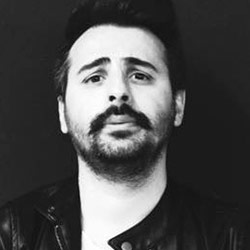
Ferdi Alici (TR) is the Founder and Director of OUCHHH, a talented new media and motion design agency. Ferdi strives to find balance between art, science, and technology in every work he creates. As a new media artist and designer, he believes that science inspires great art, thus their integration is vital to Ferdi’s approach. He creates award-winning outdoor A/V performances, video mapping projections, kinetic sculptures and immersive experiences that touch upon the belief in employing design principles based on nature and applying these to computational design. Ferdi’s work has been featured in world-renowned museums, organizations, publications and has worked with numerous international brands and recently working for Netflix USA and Sony USA.
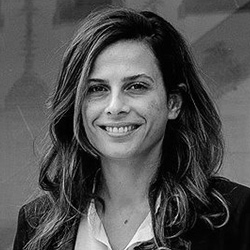
Francesca Bria (IT) is Senior Researcher and Advisor on Technology and Innovation policy. She has a PhD in Innovation Economics for Imperial College, London and MSc on Digital Economy from University of London, Birbeck. As Senior Programme Lead at Nesta, the UK Innovation Agency, she has led the EU D-CENT project, the biggest European Project on direct democracy and digital currencies. She also led the DSI project on Digital Social Innovation in Europe, advising the EU on digital social innovation policies. She has been teaching in several universities in the UK and Italy and she has advised Governments, public and private organizations and movements on Technology and Innovation policy, and its socio-economic impact. Francesca Bria is an adviser for the European Commission on Future Internet and Innovation Policy. She is currently the Commissioner of Digital Technology and Innovation for the city of Barcelona in Spain and she is leading the DECODE project on data sovereignty in Europe.
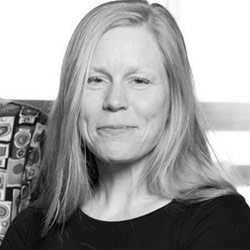
Rikke Frisk (DK) is the founder and co-director of the community focused culture production company: Indgreb, which is based in Copenhagen. Indgreb specializes in projects within participant-driven art and innovation events. Within their portfolio is the creation of the international innovation and art competition festival, Afsnit I. Rikke’s latest initiative is Talk Town – a debate festival on gender, equality and feminism of which she is co-initiator and festival director, a position she is familiar with from her time as manager and co-creator of Strøm – the leading festival for electronic music in Scandinavia, which she ran for several years. Later on Rikke was head of the secretariat for the Copenhagen hosting of WOMEX – the world’s biggest world music fair and festival. Among several obligations she is a member of the board of Denmark’s leading venues for contemporary, experimental Jazz and world music: Copenhagen Jazzhouse and Global. With a background in architecture and communication she is an experienced creative leader, with renowned relational abilities to unfold peoples skills and ideas.
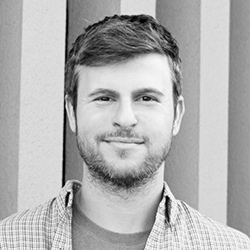
Nadav Hochman (US) is co-founding director of The Tech + Arts Initiative at The Tech Museum of Innovation in Silicon Valley (CA, USA), facilitating creative collaborations between global artists, designers, industry partners, and research institutions. Prior to joining The Tech, Hochman led acclaimed projects in the tech industry, academia, and the art world. His work has been exhibited in MoMA (NYC), Google Zeitgeist, and SXSW and featured in media outlets such as Popular Science, the Atlantic, Wired, and the Guardian. Hochman holds a PhD in Art History from the University of Pittsburgh.
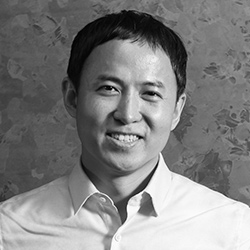
Daehyung Lee (KR), art critic, curator, and POWER LEADER 2012 acclaimed by Forbes Korea, has been curating contemporary Asian art for the last 17 years. He curated Korean Eye Moon Generation in 2009 and its nomadic show until 2012 at Saatchi Gallery in London. Currently he leads Hyundai Motor’s ARTLAB and its global art partnerships that include MMCA’s Hyundai Motor Series to Tate Modern’s Hyundai Commission, LACMA’s The Hyundai Project, Bloomberg Brilliant Ideas. Most recently, he curated “Counterbalance: The Stone and the Mountain” at the Korean Pavilion, La Biennale di Venezia 2017 and the Max Mara Coats! Seoul in 2017. He holds an MA in Curatorial Studies from Columbia University in New York and has advised the interdisciplinary playground ZER01NE (2018), Gwangju Biennale (2016), Busan Biennale (2014) and Cheongju Craft Biennale (2013).
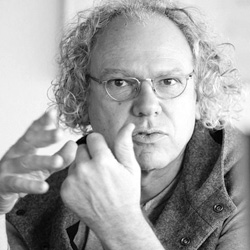
Alexander Mankowsky (DE), born in Berlin 1957, studied Social Science, Philosophy and Psychology at the ‘Freie Universität Berlin’. In 1989 he started working in the research institute of Daimler in Berlin. The multidisciplinary approach in the institute integrated a wide array of disciplines, from social sciences to artificial intelligence. His current working topics are Futures Studies, focussed on the ever changing culture of mobility, the interdependency of social and technological innovation and other aspects of envisioning paths into the future.
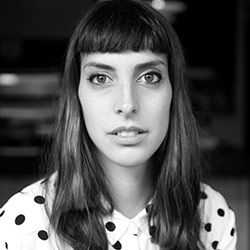
Moon Ribas (ES) is a Catalan avant-garde artist and cyborg activist best known for developing the Seismic Sense, an online seismic sensor implanted in her feet that allows her to perceive earthquakes taking place anywhere in the planet through vibrations in real time. Ribas transposes the earthquakes into either sound, in her piece Seismic Percussion; or dance, in Waiting For Earthquakes. In 2010 she co-founded the Cyborg Foundation, an international organisation that aims to help people become cyborgs, defend cyborg rights and promote cyborg art. Ribas also co-founded the Transpecies Society in 2017, an association that gives voice to non-human identities, defends the freedom of self-design and offers the creation of new senses and new organs in community.

Şerife (Sherry) Wong (US/TR) is an artist, activist, and AI ethics consultant. In 2018, she founded Icarus Salon, an initiative to enrich the dialogue on the ethics of emerging technology. She was a Program Manager for the Autodesk Residency Program and created the Impact Residency at Pier 9 Technology Center (San Francisco, 2015-2018) where she worked with over 100 leading creative technologists exploring the future of robotics, AR/VR, engineering, 3D printing, and architecture. Şerife Wong has also worked on the development team at the Electronic Frontier Foundation and was assistant editor of Artnet Magazine. As an artist, she has exhibited internationally at venues such as Art Basel Miami, Shanghai Art Fair, FIAC Paris, ARCO Madrid, and Art Cologne. She is now focusing on her AI ethics work, which includes serving on a scientific advisory panel for USAID and Duke University on the future use of AI to address humanitarian challenges and researching AI ethics and governance for the Center for Advanced Study in the Behavioral Sciences at Stanford University.
2019 S+T+ARTS Prize Nomination Committee
All submissions are judged by a nomination committee in the order of their arrival. The nomination committee selects up to 30 projects to nominate for prize consideration by the jury.

Francesca Bria (IT) is Senior Researcher and Advisor on Technology and Innovation policy. She has a PhD in Innovation Economics for Imperial College, London and MSc on Digital Economy from University of London, Birbeck. As Senior Programme Lead at Nesta, the UK Innovation Agency, she has led the EU D-CENT project, the biggest European Project on direct democracy and digital currencies. She also led the DSI project on Digital Social Innovation in Europe, advising the EU on digital social innovation policies. She has been teaching in several universities in the UK and Italy and she has advised Governments, public and private organizations and movements on Technology and Innovation policy, and its socio-economic impact. Francesca Bria is an adviser for the European Commission on Future Internet and Innovation Policy. She is currently the Commissioner of Digital Technology and Innovation for the city of Barcelona in Spain and she is leading the DECODE project on data sovereignty in Europe.

Nadav Hochman (US) is co-founding director of The Tech + Arts Initiative at The Tech Museum of Innovation in Silicon Valley (CA, USA), facilitating creative collaborations between global artists, designers, industry partners, and research institutions. Prior to joining The Tech, Hochman led acclaimed projects in the tech industry, academia, and the art world. His work has been exhibited in MoMA (NYC), Google Zeitgeist, and SXSW and featured in media outlets such as Popular Science, the Atlantic, Wired, and the Guardian. Hochman holds a PhD in Art History from the University of Pittsburgh.

Daehyung Lee (KR), art critic, curator, and POWER LEADER 2012 acclaimed by Forbes Korea, has been curating contemporary Asian art for the last 17 years. He curated Korean Eye Moon Generation in 2009 and its nomadic show until 2012 at Saatchi Gallery in London. Currently he leads Hyundai Motor’s ARTLAB and its global art partnerships that include MMCA’s Hyundai Motor Series to Tate Modern’s Hyundai Commission, LACMA’s The Hyundai Project, Bloomberg Brilliant Ideas. Most recently, he curated “Counterbalance: The Stone and the Mountain” at the Korean Pavilion, La Biennale di Venezia 2017 and the Max Mara Coats! Seoul in 2017. He holds an MA in Curatorial Studies from Columbia University in New York and has advised the interdisciplinary playground ZER01NE (2018), Gwangju Biennale (2016), Busan Biennale (2014) and Cheongju Craft Biennale (2013).

Alexander Mankowsky (DE), born in Berlin 1957, studied Social Science, Philosophy and Psychology at the ‘Freie Universität Berlin’. In 1989 he started working in the research institute of Daimler in Berlin. The multidisciplinary approach in the institute integrated a wide array of disciplines, from social sciences to artificial intelligence. His current working topics are Futures Studies, focussed on the ever changing culture of mobility, the interdependency of social and technological innovation and other aspects of envisioning paths into the future.

Şerife (Sherry) Wong (US/TR) is an artist, activist, and AI ethics consultant. In 2018, she founded Icarus Salon, an initiative to enrich the dialogue on the ethics of emerging technology. She was a Program Manager for the Autodesk Residency Program and created the Impact Residency at Pier 9 Technology Center (San Francisco, 2015-2018) where she worked with over 100 leading creative technologists exploring the future of robotics, AR/VR, engineering, 3D printing, and architecture. Şerife Wong has also worked on the development team at the Electronic Frontier Foundation and was assistant editor of Artnet Magazine. As an artist, she has exhibited internationally at venues such as Art Basel Miami, Shanghai Art Fair, FIAC Paris, ARCO Madrid, and Art Cologne. She is now focusing on her AI ethics work, which includes serving on a scientific advisory panel for USAID and Duke University on the future use of AI to address humanitarian challenges and researching AI ethics and governance for the Center for Advanced Study in the Behavioral Sciences at Stanford University.
2019 S+T+ARTS Prize Advisors
22 international advisors who have reputation and credibility in the field recommend projects and help to encourage wider ranges of participants as well as a geographical and gender balance.
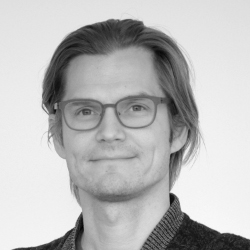
Jussi Ängeslevä (FI) is a designer, an artist and an educator. With home base at the Berlin University of the Arts and the Royal College of Arts, but lecturing around the planet, he is working with digital materiality and interaction design. In parallel to the academic work, he is the Vice Creative Director of ART+COM studios. His design ethos is leveraging hardware, software, physical and graphic design in the search for elegance in highly specific solutions, where the meaning of a work is inseparable from the medium communicating it.

Camille C. Baker (CA/UK) is a Reader at the School of Communication Design, University for the Creative Arts, Epsom, UK. She is also a media artist-performer/researcher/curator who has done recent work in participatory mobile and sensor performance using wearable technologies, and is now exploring creative coding and electronic development for smart-fashion projects. Her other research interests have included: responsive interfaces and environments, video art and live cinema, experience design, telematics, networked communities, web animation, digital media curating, and music composition and performance.
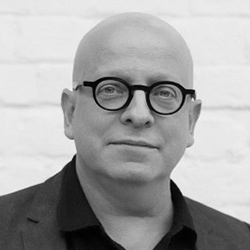
Maurice Benayoun (MoBen, 莫奔) (FR) is artist, theorist and curator and a pioneering figure in the field of New Media Art. His work explores media boundaries, from virtual reality to large-scale public art installations, from a socio-political perspective. Benayoun has been widely awarded (4 Prix Ars Electronica awards, Golden Nica 1998…) and exhibited in major international museums, biennials and festivals. Some of MoBen’s major artworks include Tunnel under the Atlantic (95), World Skin, a Photo Safari in the Land of War (97). MoBen’s most recent works investigate the concepts of critical fusion and transactional aesthetics. Benayoun is currently Professor at the School of Creative Media, City University Hong Kong.
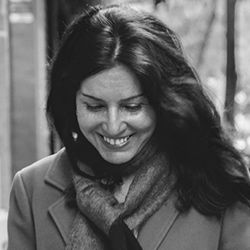
Isabel Berz (ES) is Head of IED REC, the Research and Education Center at the Istituto Europeo di Design, Spain. As Fashion Designer, Researcher and Educator, Isabel launched her own fashion label in 1990. In 2004 she was nominated Director of the Fashion School at IED Madrid, and in 2016 she founded IED REC, Research and Education Center in Madrid as an incubator of research at the intersection of Fashion, Design, Craft and Technology. IED REC creates research programmes like IED CoDesign Project Las Manuelas, IED Craft Platform and is Partner of the EU Cosme Worth Partnership Project and the EU Horizon 2020 Re-FREAM Project.
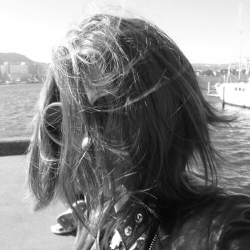
Régine Debatty (BE) is a writer, curator, critic, and founder of we-make-money-not-art.com, a blog which received 2 Webby awards and an honorary mention at the STARTS Prize. Régine Debatty writes and lectures internationally about the way in which artists, hackers, and designers use technology as a medium for critical discussion. She also created A.I.L. (Artists in Laboratories), a weekly radio program about the connections between art and science for Resonance 104.4 FM in London (2012–14), and is co-author of the “sprint book” New Art/Science Affinities published by Carnegie Mellon University.

Nick Ervinck (BE) is fostering a cross-pollination between the digital and the physical and explores the boundaries between various media. Studio Nick Ervinck applies tools and techniques from new media, in order to explore the aesthetic potential of sculpture, 3D prints installation, architecture and design. Through his divergent practice, a strong fascination with the construction of space is noticeable. Not only does Nick Ervinck focus on the autonomous sculptural object, he also questions its spatial positioning and points to the phenomenological experience and embodiment of space. Ervinck’s work in short oscillates between the static and the dynamic, prospecting new virtual or utopian territories. Nick Ervinck creates huge installations, sculptures, prints, work drawings and animated films. For several years he participated in many individual projects and group shows.
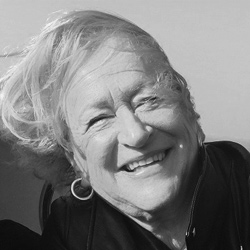
Beatrice de Gelder (NL) is Professor of Cognitive Neuroscience in the Faculty of Psychology and Neuroscience at Maastricht University in Maastricht, The Netherlands, and a member of the Maastricht Brain Imaging Centre (M-BIC). Prior to her current assignments, she was a Senior Scientist at the Martinos Center for Biomedical Imaging, Harvard University. She received an MA in Philosophy, an MA in Experimental Psychology and a PhD in Philosophy from Louvain University in Belgium. Her current research focuses on face and body recognition and, recently, on the neuroscience of art.

Chiaki Hayashi (JP) is the co-founder and is currently the Representative Director of Loftwork Inc. Loftwork succeeds to annually produce over 600 projects. She manages the operation of the company’s creative platform Loftwork.com which has 25,000 creators registered, FabCafe which is a cafe with digital fabrication tools, and a material-centered co-working office MTRL. She is currently Japan Liaison to the Director at the MIT Media Lab. She has recently founded “Hidakuma” which aims to rebuild nature and local creativity.
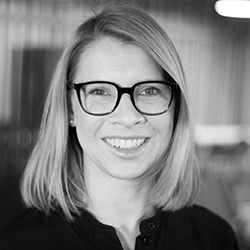
Anja Hendel (DE) has been Director of Innovation Management and Digital Transformation for Finance at Porsche AG since 2017 and she works alongside Dr. Mahdi Derakhshanmanesh to head up the Porsche Digital Lab in Berlin. This technical laboratory is a platform for collaborating with technology companies, start-ups and scientific institutions, and deals with the practical application of concepts such as blockchain, artificial intelligence and the Internet of Things at Porsche. With a degree in business data processing, Anja Hendel worked as Assistant to the Chief Financial Officer at Porsche from 2015 onwards, and was responsible for the IT portfolio and strategy from 2013 onwards. Before joining Porsche, she managed various departments at former pharmaceutical company Celesio AG (now known as McKesson Europe AG) from 2007 onwards, including the “SAP services” and “IT project portfolio” departments. Prior to these roles, Hendel worked at Stuttgart-based consulting firm Capgemini Deutschland GmbH for six years.

Dr Drew Hemment (GB-SCT) is an artist, designer and academic researcher. He is Chancellors Fellow at Edinburgh Futures Institute, Project Lead of GROW Observatory, Founder of FutureEverything and on the Editorial Board of Leonardo. His work has been covered by New York Times, BBC and NBC and recognised by awards from the arts, technology and business sectors including STARTS Prize 2018 (Honarary Mention), Lever Prize 2010 (Winner) and Prix Ars Electronica 2008 (Honorary Mention).
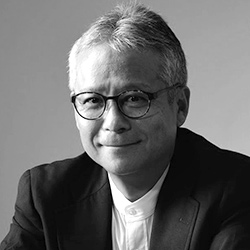
Hiroshi Ishii (JP/US) is the Jerome B. Wiesner Professor of Media Arts and Sciences at the MIT Media Lab. Joining the Media Lab in 1995, he founded the Tangible Media Group to make digital tangible by giving physical and dynamic form to digital information and computation. Here he pursues his visions of “Tangible Bits” (1997) and “Radical Atoms” (2012) that will transcend the current dominant paradigm of Human-Computer Interaction: “Painted Bits” of Graphical User Interfaces. For his visionary work in HCI, he was awarded tenure from MIT in 2001 and the SIGCHI Lifetime Research Award in 2019.

Pascal Keiser (FR) has developed transversal projects between culture, digital society and economy since 2003. He is co-founder and general coordinator of French Tech Culture since the end of 2013, the national cultural and digital label of the French government. He is co-founder of The Bridge, European accelerator of startups on crossovers culture & technology in Avignon, and was director of Technocité Creative Industries Knowledge Center in Mons from 2007 to 2017. He also directed the digital program of Mons 2015, European Capital of Culture, and is a member of the steering committee of the new H2020 VERTIGO STARTS program.
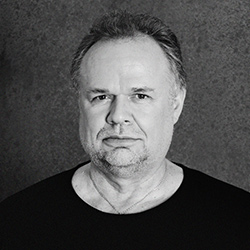
Kilian Kleinschmidt (DE) is an international networker, humanitarian and refugee expert with 30 years of experience in a wide range of countries, emergencies and refugee camps as United Nations official, Aid worker and Diplomat. He is the founder and Chairman of the startup Innovation and Planning Agency (IPA) which aims at connecting the millions of poor and disadvantaged with relevant and under-utilized resources and modern technologies of the 21st century through its project SWITXBOARD. He is part of a number of initiatives and Projects which aim at global connectivity through better use of globalization. He is currently developing a number of ventures which aim at sustainable investment and social impact in very fragile environments.

Sophie Lamparter (CH) is founder and CEO of DART, a testing lab bringing Design, Art, Research and Technology together to create clever human-machine interfaces. DART works with research projects and early startups, enterprises and investors. Sophie Lamparter’s passion is finding new ideas and talent with a creative approach to technology. She helps them scale their ideas and consults with organization to challenge the status quo and launch new partnerships. Before starting DART, she was Associate Director at swissnex San Francisco, Switzerland’s Innovation outpost in Silicon Valley. Sophie Lamparter has organized and curated interdisciplinary exhibitions and programs in media, digital and data arts, interaction and game design, robotics, VR, AR, architecture and urbanism. She deputed as a STARTS Prize juror in 2017 and has spoken at international events such as SXSW in Austin, Gray Area in San Francisco and the Lift Conference in Geneva.

Christiane Luible (AT) is co-leader of the department Fashion & Technology at the University of Art and Design Linz. Her main field of interest is practice-led design research for the field of fashion design. At this, she focuses on the 3D modelling and virtual simulation of fashion and the influence of digital media on the process of fashion design. She received several international Design Award such as the Lucky Strike Junior Design Award. She collaborated on large European clothing research projects and is today responsible for the several research projects dealing with fashion and technology.

Kenric McDowell (US) has worked at the intersection of culture and technology for twenty years. His résumé includes work for Nike, Focus Features, HTC Innovation and Google. He currently leads the Artists + Machine Intelligence program at Google Research, where he facilitates collaboration among Google AI researchers, artists and cultural institutions. Kenric McDowell’s work often draws from the history of culture and philosophy for metaphors and models that can be applied to emerging 21st century culture and technology.
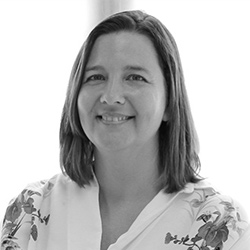
Marta de Menezes (PT) is a Portuguese artist (Lisbon, 1975) with a degree in Fine Arts by the University in Lisbon, and a MSt in History of Art and Visual Culture by the University of Oxford. She has been exploring the interaction between Art and Biology, working in research laboratories demonstrating that new biological technologies, DNA, proteins and live organisms can be used as an art medium. Her work has been presented internationally in exhibitions, and articles. She is since 2005 artistic director of Ectopia – Experimental Art Laboratory and from 2009 director of Cultivamos Cultura – Association.

Elaine W. Ng (KR) is the editor and publisher of ArtAsiaPacific, a 25-year old publication dedicated to contemporary art from Asia, the Pacific and the Middle East. In the mid-1990s she worked at Hanart TZ Gallery, a pioneer promoting contemporary art from China, Hong Kong and Taiwan. From the 2001-2002 Ms. Ng managed Videotage, one of Asia’s first non-profit organizations for film, video and new media. Ms. Ng currently sits on the advisory board of Asia Art Archive in Hong Kong, New Hall Art Collection at Cambridge University, and Alserkal Avenue in Dubai. Additionally, she lecturers at Hong Kong Baptist University’s Academy of Visual Arts and is a board member of Asia Art Archive in America, where she serves as secretary. Ms. Ng is based in Hong Kong.
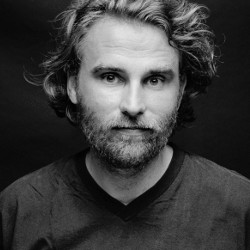
Bastian Schäfer (DE), born in 1980, is a maverick, kitesurfer, TED speaker, father of a boy and a girl and automotive engineer. After working at Volkswagen Design he entered Airbus in 2006 in different projects for A340, A350 and A380. In 2009 he joined the project team that created the award winning Airbus Concept Cabin with its’ bionic structure. Bastian Schäfer is the project leader of the Bionic Partition project where he is focussing on generative design combined with 3D printing technology.

Hugues Vinet (FR) is the Coordinator of the VERTIGO project. He has been Director of Research and Development of IRCAM since 1994 and manages all related research, development and technology transfer activities. He previously headed the Musical Research Group of the French National Institute of Audiovisual where he developed advanced R&D in real-time audio signal processing and human-machine interfaces. He participates in many bodys of experts in the fields of audio, music, multimedia, information technology and technological innovation.

Filip Visnjic (UK) is a lecturer, curator and a media technologist born in Belgrade now living in London. He is the founder and editor-in-chief of CreativeApplications.net. The site tirelessly beat reports innovation and catalogues projects, tools and platforms at the intersection of art, media, and technology. In 2012, Filip Visnjic co-founded Resonate, educational platform and a festival located in Belgrade and same year launched HOLO, magazine about art, science and technology. He is currently ‘director of platform’ at FRM, working on a new canvas for digital art and he also lectures at a number of universities in the UK.
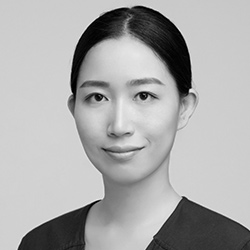
Jo Wei (CN) is a curator, researcher and the founder of the Pan Bio-Art Studio (PBS). She is currently a researcher of Art, Science and Technology (AST) in the Central Academy of Fine Arts (CAFA). Her recent research interests include AST in a posthuman context, bio art/bio design, and others. Among the list of her many curations are Quasi-Nature [Bio Art, Borderline, Laboratory] (2019, Hyundai Motorstudio, Beijing), Kairos (2018, Ars Electronica, Linz), When Forms do not Become Attitude (2016, CAFAM, Beijing). Wei was also the co-curator of Ethics of Technology (2016) and Post-Life (2018), 1st and 2nd edition of Beijing Media Art Biennale.
Poesis into Praxis: Hybrid Creative Activisms
Joint statement of the S+T+ARTS Prize ’19 Nomination Committee (Francesca Bria, Nadav Hochman, Daehyung Lee, Alexander Mankowsky, Şerife (Sherry) Wong) and the S+T+ARTS Prize Jury (Ferdi Alici, Francesca Bria, Rikke Frisk, Nadav Hochman, Daehyung Lee, Alexander Mankowsky, Moon Ribas, Şerife (Sherry) Wong).
From the total of 2278 entries, 731 projects were directly submitted to S+T+ARTS Prize ’19. These entries were reviewed by the S+T+ARTS Prize Nomination Committee, an international group of leaders from the arts, academia, and industry. This diverse group spent three days reviewing the applications and singled out 13 projects to be nominated as finalists for the S+T+ARTS Prize. In parallel, three additional Prix Ars Electronica juries—focusing on the categories of Computer Animation, Digital Musics & Sound Art, and Artificial Intelligence & Life Art—reviewed the projects that were submitted to the wider Prix Ars Electronica. Each of these three Prix Ars Electronica juries was then asked to nominate five additional projects from their specific award category for the S+T+ARTS Prize. Out of this group of 28 finalist projects for the S+T+ARTS Prize, the 2 Grand Prize winners and 8 Honorary Mentions were determined by the S+T+ARTS Prize Jury, a group comprised of the S+T+ARTS Prize Nomination Committee and one representative from each of the three Prix Ars Electronica juries.
The European Commission’s STARTS Program and Prize has become a dynamic global barometer through which new collaborative, cross-disciplinary, creative visions can be examined. With 2278 project submissions to this year’s competition, representing work by artists, designers, technologists, and scientists, the program has grown to function as a critical instrument in showcasing alternative ways to see and question ourselves and others while maintaining an unbounded terrain that allows freedom in creative and technical experimentation. Throughout vibrant deliberations, the jury recognized and emphasized time and again the cruciality and significance of the STARTS program’s distinctly European message, shining light on new pathways to innovative yet positive societal change driven by deep humanistic values and rooted in a long and extraordinary tradition of responsible cultural experimentation.
In the face of tectonic technological developments, environmental changes, and consequent volatile political climates, the majority of this year’s projects go beyond the dialectic of legitimate and illegitimate ends and instead unfold the ways in which emerging technological developments affect not only what we can do but also what we can be. The jury noticed numerous projects’ deep concern with emergent means of production that attempt to redefine our relations with and understandings of new forms of technology. Against technological totality that is becoming ever more efficient and translucent, many projects offer instruments for individual and collaborative interventions that promote social and political awareness while facilitating an authentic sense of agency for positive change.
This tendency was apparent throughout the review process. Many of the submitted projects deal with current and future environmental concerns, raising awareness but also providing concrete tactics and solutions. Other projects unveiled surveillance systems, delineating the mechanisms through which technological devices are constructed and helping us gain control (even if only partial) over our surroundings. The jury also noted the recurrent complicated relationship between the artificial and the biological, the subjectivity of science and the potential mutability of the body and identity. Finally, the jury appreciated the continued integration of more traditional artistic methodologies into unexpected environments and situations, offering alternative perspectives and insights within the field of medicine and medical training, in transportation of autonomous vehicles applications, and in strengthening dialogue and a sense of meaning among diverse communities—all emphasizing the centrality of humans and other living creatures in the development of technological ecosystems.
It seems to us that the message from these projects is clear: the more evasive technology becomes, the more extrinsic agency becomes possible and necessary and, as a result, everything around us becomes a means in its service. The basic gesture here, so it seems, is to show how artistic thinking provides us with an empowered sense of hope for positive change—even in a state of totally administered, seemingly impenetrable, and universally invasive technological environments. And as the winners and nominees of this year S+T+ARTS Prize exemplify, this change is apparent and tangible on the individual, group, and societal levels.
The jury feels that this message of hope is symbolically appropriate on the occasion this year of Ars Electronica’s 40th anniversary—an institution that has grown to become a responsible cultural leader, relentlessly advocating for the cruciality of the arts within technological and industrial setups; providing countless opportunities for conversing, collaborating, showcasing; and exposing the global community to the wonders that occur in the in-between spaces of art, technology, and society. We are grateful to Ars Electronica for giving the jury an opportunity to take part in their extraordinary mission and wish it continued boundary-pushing endeavors that cumulatively bring us all one step closer to a better tomorrow.
Grand Prize – Artistic Exploration
Awarded for artistic exploration and art works where appropriation by the arts has a strong potential to influence or alter the use, deployment, or perception of technology.
Project Alias
Rename your home assistant and make sure it never listens.
Bjørn Karmann, Tore Knudsen
As many domains of our private and social lives are being transfigured by new technologies of identification, monitoring, analyzing, and controlling, Karmann’s fungus-looking “parasitic” device offers a poetic yet concrete DIY intervention that allows anyone to appropriate any voice-activated appliances, thus making smart assistants less invasive. As the project title suggests, Karmann effectively uses the artistic alienation effect (“making it strange,” or defamiliarization) to make the technology different and alien to us, as something to be carefully observed, learned, and potentially changed. It is a magnificent example of turning poesis into praxis, offering a balance in conveying technology’s means of communicability while effectively changing its mediality.
Project Alias exemplifies how contemporary technologies—in this case, smart assistants—require that we open ourselves to the passive reception of the condition under which technology can be used: the user is used by the voice assistant in order to collect data about our private lives and environments. The medium is indeed the message, as McLuhan used to say, and we the users and our private data increasingly, and in some cases unintentionally, become the content of that message. Project Alias offers to flip these power relations on their head, allowing us a more reciprocal exchange: producing white noise to prevent the speaker from constantly listening or teaching it to recognize our voice to help secure our privacy.
Project Alias breathes new life into the metaphor of the parasite by turning it into an applicable political tool, hijacking a technological “host” in order to change their operations and in turn affect their relations to their surroundings. The parasitic intervention can take one of two forms: the host might do all it can to eradicate the parasite, or it might rearrange things to accommodate the needs of the parasite. In either case, the presence of the parasite means that things cannot, and will not, remain the same. Project Alias, the jury hopes, will prompt the industry to incorporate and adjust to this parasitic disturbance and provide us with transparency and control over our own technological environments.
Grand Prize – Innovative Collaboration
Awarded for innovative collaboration between industry or technology and the arts (and the cultural and creative sectors in general) that opens new pathway for innovation.
Ciutat Vella’s Land-use plan
Big data, KDD, and Citizen Participation to Ensure Coexistence between Economic Activity and the Citizens’ Quality of Life
300.000 Km/s
In Jean-Luc Godard’s seminal 1965 film by the same name, “Alphaville” was a dystopian smart city that was optimized and consequently ruled by a central computer processor labelled “IBM.” And come the early days of the implementation (and eventual failure) of early versions of these technologies around the year 2000, smart cities were in fact presented as glitzier versions of Alphaville. In today’s updated version of Alphaville, we see Big Tech succeeding both technically and politically in applying technologies more familiar to us on our smartphones to entire city neighborhoods, namely the Toronto waterfront. Yet again as in Alphaville, a data-driven ecosystem is being erected in which the extent of citizens’ participation is restricted to the mere configuration of tools that were designed and developed by overlord-like companies. And given Godard’s grim vision of the data-driven city, it is no wonder that citizens across the globe today are worried by what this increasing integration of sensors and data-collection into our cities augurs for our collective futures.
300.000 Km/s represents a refreshing alternative path for smart city technologies. The Barcelona initiative wants to reverse the top down, Big Tech-led smart city approach by putting citizens first, and using arts, technology, and data science to unleash the potential of human-centered urban planning and innovation. It proposes an urban plan designed through a large-scale participatory democratic process that engages thousands of citizens via an online platform called decidim.barcelona. The objective is to then apply the learnings and insights gathered through this platform to tackle gentrification and find a balance between urban design interventions that serve tourists and the city’s other commercial and economic engines, and interventions that serve the day-to-day needs of local residents. Can the digital layer influence how urban planners grapple with questions of social justice and health such that our cities champion the common good over capitalist gains for the few? Can the arts, data science, and democratic participation revive social, ecological, and economic equities in our urban spaces? In grappling with these questions, this work shows us compelling news way to meld crowdsourcing and data analysis to erect a new collective infrastructure for a shared, prosperous, urban future.
Honorary Mentions
Anatomy of an AI System
Kate Crawford / AI Now Institute and Vladan Joler / SHARE Lab
A leading political axiom of our time is that the future will belong to those that best harness the technologies of Artificial Intelligence. The Anatomy of an AI System hopes to construct a different path. In this collaboration between Kate Crawford, a world-leading AI researcher from New York University’s AI Now Institute, and Vladan Joler, an artist from the SHARE foundation, digital AI assistant technologies such as the Amazon Echo are exposed as new forms of extractivism, whose immediate reliance on human cognitive and affective labor extend into questions around capital, physical labor, and even the natural world. And how, despite their growing ubiquity, the ultimate social, environmental, economic, and political costs of these technologies still remain unknown.
AI is already employed in ways that exacerbate inequality and increasingly threaten global democracies. Yet it also represents one of humanity’s greatest opportunities to solve acute epochal challenges such as climate change and equitable access to healthcare. Despite the palpable fact that artificial Intelligence is already deeply shaping our societies and fundamentally changing the human experience, it has been until now largely developed and deployed by private companies without public awareness or consent, and shielded from collective view as a form of “intellectual property.” Through its minutely-detailed high-resolution map, the Anatomy of an AI System allows us a more panoramic view of the diverse range of system extractions intrinsic to the current applications of this technology. Through this, we are urged to grapple with the ethical, legal, social, and economic implications of the current uses of AI and how we might in turn develop and deploy new forms of artificial intelligence in which the sources and later applications of these powerful algorithms might remain open and just.
Arte Eletrônica Indígena
Thydêwá
The jury found this initiative to be a strong example of partnerships that center the voices of indigenous communities and amplify their perspectives as part of contemporary identity and collective heritage. Indigenous people are among the front-line stewards of the environment and their continual contributions to modern cultural and ecological systems are critical inputs for innovation. In hopes of further supporting these peoples’ roles in the innovation ecosystem, Arte Eletrônica Indígena demonstrates best practices for creative capacity building in rural indigenous communities.
This project brings to attention the cultural symbols and creative output of eight indigenous villages in the Brazilian state of Bahia through supporting their close collaborations with artists from Brazil, Bolivia, and the UK. The jury recognized the importance of the impetus for this intercultural partnership coming from the non-governmental organization Thydêwá, a group of intercultural individuals that has been working closely with these communities for 17 years to promote positive social transformation. The dialogue created by these art residencies presents a powerful counter-narrative around and a show of meaningful resistance to the traditional integration-focused programs that all too often attempt to homogenize the artistic traditions and productions of historically-marginalized peoples. By incorporating digital tools into new creative formats, the residencies situate electronic art as a compelling medium for collaborative creative processes and proposes the crucial role indigenous people can and should play in the continued development of the global technological ecosystem. This multi-layered artistic engagement urges meaningful dialogues around the practical uses of technology to activate collaborative creative processes—and this can enrich digital practices for all.
Biocomputer Rhythms
Eduardo Reck Miranda
Can a genuine sense of creative partnership be established between a human and microorganism? Miranda’s Biocomputer Rhythms sets out to examine how a computer built out of living slime mold can play with and improvise on a musical instrument—in this case a piano—together with a professional musician. The resulting duet between the two living entities is unpredictable and suggests a new kind of “creation of a machine that is creative,” as Miranda describes it. The jury agreed that Biocomputer Rhythms is a significant exemplar of recent Bioart practices that continue to blur the lines between the programmable, the calculable, and the unpredictable. The work extends the range of existing interactions between humans and silicon-based computers, and offers a speculative creative application that is, perhaps, more aligned with the human tendencies to hesitate, improvise, and contrive.
BLP-2000 / Black List Printer
BCL – Georg Tremmel and Shiho Fukuhara
Foucault’s concept of Biopolitics—how regimes of authority manage our bodies to achieve control—is disturbingly reimagined in BLP-2000 / Black List Printer. BCL’s project asks us to consider a plausible biotechnological future in which an unofficial “Black List” of potentially harmful and forbidden DNA sequences has been created and shared among companies for bio-security reasons. The output of this project is a never-ending printing machine that stores and chronicles DNA sequences that companies might label as harmful and forbidden. The jury noted that while the project is a powerful and poetic reminder of the ethical dangers that are inherent to the development of new biotechnological tools, its means of production—a DIY DNA Synthesiser and hackable processes—reveal a great sense of potential socio-political strength.
SimCath
Fernando Bello, ICCESS & Salomé Bazin, Cellule studio
SimCath is a simulation unit which is used for training medical professionals in cardiological surgical procedures. The jury commended Salomé Bazin for bringing her artistic practice as a multimedia artist with experience in theater design to the field of medicine. Her studio, Cellule, worked with the Imperial College Centre for Engagement and Simulation Science in London on the development of an immersive environment that resembled a theater stage that mimicked a real surgical environment. This scenographic environment was then used for simulation training for surgeons, creating a learning environment that more accurately mimics the real high-stakes situations of invasive procedures than the traditional staid classroom. The jury was fascinated and compelled by Salomé’s creative application of her experience in stage scenography to the societally-critical context of medical training.
SLAP – See Like A Pony
Sabine Engelhardt
Imagine you are driving a car. How do you perceive and preempt what another car on the road is going to do? Now what if that other car is an autonomous vehicle (AV)? Would and should your reactions be different? Driving is a collective intuitive process that relies on acquired heuristics, imparted knowledge, and a shared empathy with the other drivers on the road. Average human drivers and bystanders at present have neither the heuristics and the knowledge, nor the empathy to safely and effectively interact with autonomous vehicles. This presents a significant public safety concern, but also opens up a greater conversation on what effect autonomous driving, and autonomous systems in general, will have on humans. How will we adapt, and in turn how will we be changed?
The jury felt that Sabine Engelhardt’s ponies were an engaging way to understand how autonomous vehicles could be designed to signal in a way that can be intuitively understood by humans. Part of Daimler’s series of projects exploring empathy in self-driving cars, SLAP explores the application of biomimetic design principles to this emerging technology. By mounting cameras on herself and her horses, Sabine Engelhardt is able to trace the reactions of her horses as they wander through meadows and forests and encounter obstacles. In observing the positioning of the horses’ ears and nuances in their physical nudges, clear modalities of communication are revealed that help shape our understandings of the role of empathy between horse and rider when navigating through space and how this might be applied to emergent AV technologies. As autonomous transportation is increasingly deployed, new forms of human-centered signals that are anchored in an awareness of their psycho-social impacts on our perception and decision-making abilities must be developed. The complexity in resolving this element of human-computer interaction in autonomous vehicles is daunting, but the answers might already be hiding in the stable.
The Murder of Pavlos Fyssas
Forensic Architecture
Among the submissions received for this year’s S+T+ARTS Prize that tended to call upon collaborative action to fight global challenges such as climate change or technological impact, this project was a stark reminder of how far ultranationalists will go in pursuit of their own agenda. Forensic Architecture used an interdisciplinary artistic approach and a vast partnership between researchers, scientists, video artists, and institutional partners to create video-based evidence of the role of the Greek political party Golden Dawn in the 2013 murder of Greek anti-fascist rapper Pavlos Fyssas. By revealing Golden Dawn’s abuse of human rights by means of creating counter narratives to prevailing authoritative understandings of investigated events, the project continuously and meaningfully encourages an increase in public dialogue on nationalism, immigration, and politics. The jury found that though the questions raised by this project yet remain unresolved, they may be more relevant than ever in the current global political moment.
This is grown.
Jen Keane
This is grown. is a project by Jen Keane that proposes a groundbreaking solution to our troubled relationship with nature. Working at the intersection of design and research, Keane has transformed her frustration with plastic pollution into an actionable idea for reducing the amount of plastic waste. This is grown. takes an organism-driven approach to material design. Thanks to her learning about bacterial cellulose from scientists at Imperial College London, Keane has been able to culture the bacteria herself. Using new tools to manipulate the natural growth process, she has succeeded in employing it to furnish an unprecedented form of textile creation that she calls “microbial weaving”.
Keane’s multi-disciplinary collaboration with biology, biomaterial science, and mechanical engineering strongly suggests that bio-fabrication technology could become a leading paradigm in 21st century fabrication. Combining technological ability with environmental responsibility in a unique way, This is grown. allows us not only to imagine, but also to shape the future of production. Far more than aesthetic design, the project proposes an end to the damaging cycle of petrochemical-based production and wastage. “After all,” Keane states, “nature has had 3.8 billion years to perfect the ultimate circular economy: Life. Maybe we can still learn something.”
Nominations
30°
Mathias Foot, Janna Nikoleit, Franziska Rast, Stephan Schakulat
A-MINT
Alex Braga
Alterplex
Hakan Lidbo
Beholder
United Visual Artists
Cave of Sounds
Tim Murray-Browne in collaboration with Dom Aversano, Susanna Garcia, Wallace Hobbes, Daniel Lopez, Tadeo Sendon, Panagiotis Tigas, Kacper Ziemianin
Hello, Shadow!
Joon Moon
ISM Hexadome
Institute for Sound & Music (ISM)
Journey on the Tongue
Ayako Suwa, Evala, Yasuaki Kakehi
Meandering River
onformative, kling klang klong
Mitigation of Shock
Superflux
PatentPandas.org
Jie Qi, Carol Lin, May Qi, Ira Winder
Solar Powered Website
Kris De Decker, Marie Otsuka, Roel Roscam Abbing, Lauren Traugott-Campbell
SPACE WASTE LAB
Studio Roosegaarde
Stone Web – Expanding Space
Idalene Rapp, Natascha Unger
Stop-Motion VR
Denny Koch, Johannes Schubert
SoundShirt 2.0
CuteCircuit
Voice of Nature
Thijs Biersteker
Wastelands
Tagny Duff
